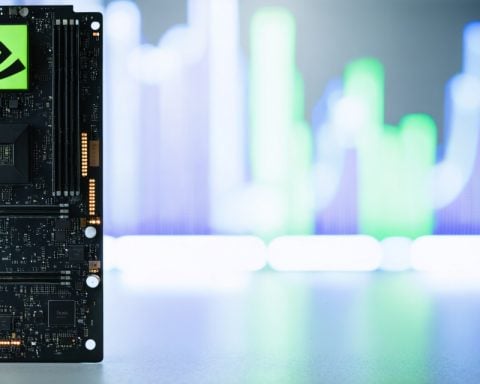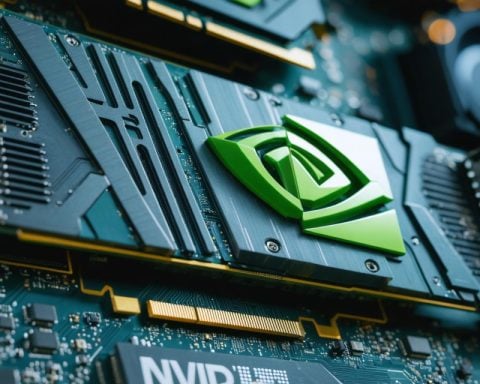- A novel cathode material developed by researchers with Toyota significantly enhances the capacity of all-solid-state fluoride-ion batteries, tripling the volume capacity compared to traditional lithium-ion batteries.
- This advancement could extend electric vehicle ranges from the current 372 miles to an impressive 745 miles on a single charge.
- The new cathode uses copper nitride, which interacts with nitrogen and fluoride ions, releasing three electrons per nitrogen atom, resulting in a durable and long-lasting power source.
- Fluoride-ion batteries offer increased safety and rapid ion movement due to their solid electrolytes, but faced challenges that the new Cu₃N cathode material helps overcome.
- This breakthrough represents a significant step towards sustainable and efficient energy solutions, paving the way for a future dominated by high-performance electric vehicles.
A new horizon in electric vehicle technology shines, as researchers in collaboration with Toyota Motor Corporation unveil a cathode material that could dramatically reshape energy storage. This innovation, developed for all-solid-state fluoride-ion batteries, triples the capacity per volume of traditional lithium-ion batteries, a feat that could extend EV ranges from a modest 372 miles to an impressive 745 miles.
Imagine a world where your electric car cruises effortlessly from San Francisco to Salt Lake City on a single charge. This ambitious vision could become reality thanks to the novel use of copper nitride, a material that reacts with nitrogen and fluoride ions in a transformative dance, releasing three electrons per nitrogen atom. The result is a durable power source that sustains multiple charge cycles without falter.
Fluoride-ion batteries have been the talk of tomorrow’s energy storage, primarily due to their potential for heightened safety and rapid ion movement, qualities that set them apart with solid electrolytes. Yet, previous iterations of these batteries faced challenges. The introduction of Cu₃N cathode material, with its high reversible capacity of roughly 550 mAh/g, addresses those shortcomings, unlocking new pathways in energy storage advancements.
This breakthrough extends beyond just battery life. It’s a step towards more sustainable and efficient power, paving the road for a future where electric vehicles dominate with unparalleled performance and reliability. With continued research into accompanying anodes and solid electrolytes, the promise of a new generation of energy-efficient vehicles looms just over the horizon—a development poised to redefine how we travel and consume energy.
Revolutionary Electric Vehicle Technology: How Fluoride-Ion Batteries Could Charge Up Our Future
How-To Steps & Life Hacks
If you’re an enthusiast in the realm of electric vehicles (EVs) or energy storage systems looking to stay ahead, staying informed on new battery technologies is crucial. Here’s how you can prepare:
1. Stay Updated on EV Innovation: Regularly read industry news, join EV forums, and follow automotive tech blogs.
2. Engage with Communities: Participate in discussions around new battery technologies, such as fluoride-ion batteries, in online communities and local meetups.
3. Explore EV Modifications: For those with technical expertise, consider experimenting with components such as battery management systems (BMS) that could be compatible with innovative battery technologies.
4. Enhance Your Knowledge: Take courses on battery technology, chemistry, and EV mechanics to deepen your understanding.
Real-World Use Cases
Extended Range Electric Vehicles: The key advantage of fluoride-ion batteries is their potential to significantly extend the range of EVs. This would vastly reduce the need for frequent recharging, especially beneficial in long-distance travel or places with limited charging infrastructure.
Consumer Electronics: Beyond EVs, fluoride-ion batteries could revolutionize consumer electronics by providing longer battery life and faster charging times.
Renewable Energy Storage: Due to their high energy density and efficiency, fluoride-ion batteries can be adapted for use in renewable energy storage systems, balancing supply and demand effectively.
Market Forecasts & Industry Trends
Industry experts predict substantial growth in the global market for solid-state batteries, projected to reach over $10 billion by 2030, with fluoride-ion variants playing a noteworthy role (source: Grand View Research). As automakers and tech firms invest heavily in sustainable technology, we can anticipate significant advancements and adoption.
Reviews & Comparisons
Fluoride-Ion vs. Lithium-Ion Batteries:
– Energy Density: Fluoride-ion handles approximately 550 mAh/g, tripling lithium-ion capacity.
– Longevity: The superior durability of fluoride-ion batteries allows more charge cycles.
– Safety: The solid electrolytes in fluoride-ion batteries reduce the risk of leakage and thermal runaway.
Controversies & Limitations
Ion Movement Challenges: While promising, ensuring the efficient and stable movement of ions in solid-state electrolytes remains difficult, potentially affecting performance at lower temperatures.
Materials & Cost: The use of advanced materials like copper nitride may pose sourcing and manufacturing challenges, influencing the initial cost of battery production.
Features, Specs & Pricing
Features:
– High reversible capacity
– Enhanced ion conductivity
– Solid electrolyte for added safety
Pricing: Currently, because of its nascent stage, pricing is speculative but expected to taper as these technologies scale.
Security & Sustainability
Fluoride-ion batteries promise enhanced safety due to their solid-state nature, reducing fire hazards associated with liquid electrolytes. From a sustainability perspective, they may utilize less scarce materials than current battery technologies, aligning with global eco-friendly goals.
Insights & Predictions
As solid-state and fluoride-ion battery technologies evolve, expect:
– Broader automotive adoption.
– Breakthroughs in miniaturization for electronics.
– Increased integration in smart grids and renewable setups.
Tutorials & Compatibility
While fluoride-ion battery tutorials are limited, resources on solid-state batteries are readily available through online platforms and technical courses.
Pros & Cons Overview
Pros:
– Longer range and lifespan for EVs
– Higher energy density
– Improved safety and sustainability
Cons:
– Technological maturity yet to be achieved
– Higher initial costs
– Possible manufacturing challenges
Actionable Recommendations
– Invest in Training: Gain skills related to solid-state technologies.
– Monitor Tech Advancements: Focus on developments in battery technology for potential investment opportunities.
– Consider EV Transition: If planning a vehicle upgrade, explore upcoming EV models touting advanced battery tech.
For more information about the advancements in electric vehicles and ongoing technological innovations, visit Toyota and other automotive leaders.
Prepare for a revolution in energy storage that could be at your doorstep sooner than expected!













